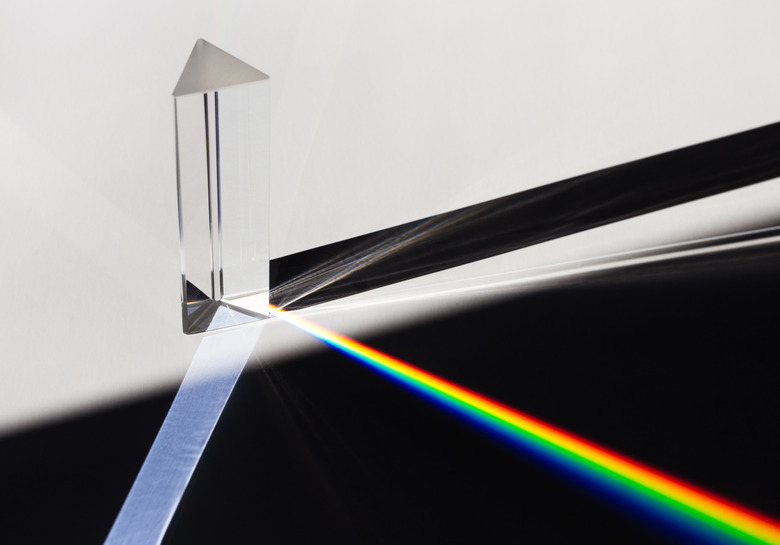How To Calculate The Refractive Index Of A Formulation
When light passes from one medium to another, such as from air to glass, both the speed of the light rays and their direction of travel change. Scientists refer to the ratio of the speed of light in a vacuum, which is constant, to the speed of light in the medium as the refractive index. The refractive index of the medium is proportional to the change in the angle of the light rays. Scientists normally carry out refractive index measurements on relatively pure liquids to verify their purity. However, refractive index measurements can also be performed on mixtures of liquids. Furthermore, if the experimenter knows the identity and amounts of each component of a mixture or formulation, he or she can calculate an estimated refractive index.
Step 1
Calculate the mole fraction X of each component of the mixture. The mole fraction of a given component A is given by "X(A) = (moles of A) / (moles of all substances)" and the moles of a substance is given by moles = (grams of substance) / (formula weight of substance).
For example, consider a mixture of 10.0 g of hexane, 10.0 g of toluene and 10.0 g of cyclohexane. The formula weights of these substances are 86.18, 92.14 and 84.16 grams per mole, respectively. The mixture therefore contains 0.116, 0.109 and 0.119 moles of these compounds. The mole fraction of hexane is therefore X(hexane) = 0.116 / (0.116 + 0.109 + 0.119) = 0.337, whereas the mole fractions of toluene and cyclohexane are 0.317 and 0.346, respectively.
Step 2
Determine the refractive indices of all components in the mixture. This information is normally available in reference books, such as the "The Merck Index," as well as in online databases (See Resources). Continuing the example from step 1, the refractive indices of hexane, toluene and cyclohexane are 1.3749, 1.4969 and 1.4262, respectively.
Step 3
Multiply the mole fraction of each component by the refractive index of that component, then sum all products to determine the estimated refractive index of the mixture. Continuing the example from step 2, the refractive index of the mixture would be "n(mixture) = (0.337 * 1.3749) + (0.317 * 1.4969) + (0.346 * 1.4262) = 1.431."
Cite This Article
MLA
Brubaker, Jack. "How To Calculate The Refractive Index Of A Formulation" sciencing.com, https://www.sciencing.com/calculate-refractive-index-formulation-7502784/. 15 November 2010.
APA
Brubaker, Jack. (2010, November 15). How To Calculate The Refractive Index Of A Formulation. sciencing.com. Retrieved from https://www.sciencing.com/calculate-refractive-index-formulation-7502784/
Chicago
Brubaker, Jack. How To Calculate The Refractive Index Of A Formulation last modified March 24, 2022. https://www.sciencing.com/calculate-refractive-index-formulation-7502784/
